The combined Canada First Research Excellence Fund investment of $150 million in McGill University's Healthy Brains, Healthy Lives (HBHL) and Western University's BrainsCAN marks a pivotal step that aims to unlock the mysteries of the human mind and lay the groundwork for a pan-Canadian network of collaboration that promises to uncover new ways to treat, prevent and cure brain disorders.
McGill and Western University have developed the McGill-Western Collaboration Grant (MWCG) Program to support impactful research that leverages this unique HBHL and BrainsCAN collaboration.
This grant program supports: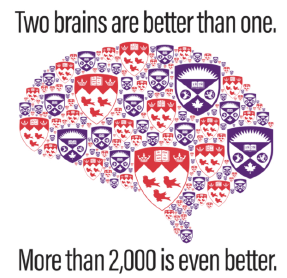
- transformational research in neuroscience and neuroinformatics;
- new and established collaborative teams;
- all project types (from discovery-based science to end-user translational research) and sizes (from smaller foundation projects to multi-year programs).
The McGill-Western Collaboration Grant Program is designed to address some of the large challenges in brain health across the lifespan via potentially high-risk, high-gain research projects. It does so through cross-institutional, multidisciplinary teams of HBHL and BrainsCAN researchers.
The first MWCG program was launched in February 2018. Seven McGill-Western joint projects were awarded.
Integrating behavioural, imaging, and transcriptional profiling to discover the impact of midlife stress in Alzheimer's disease
Principal investigators: Mallar Chakravarty (McGill), Tim Bussey (Western)

HBHL Theme 2
Total funding received: $557,900
HBHL funding received: $422,200
Award term: 3 years
Project team:
- Rosemary Bagot (McGill)
- Flavio Beraldo (Western)
- Sylvain Williams (McGill)
- Claudia Kleinman (McGill)
The elderly are amongst the fastest growing segment of the Canadian population and the prevalence of individuals suffering from Alzheimer's disease is rising quickly. This rise in diagnoses is already posing a significant burden on our health care system. Left untreated, this may cause a widespread public health crisis in Canada. Right now there are no effective treatments for Alzheimer's disease and one of the most viable strategies available is preventing the disease before it starts. The goal of this proposal is to bring together leading groups across McGill University to build a first-of-its-kind that accelerates discovery using animal models of Alzheimer's disease. The goal is to integrate complex behaviours based on touchscreen technology, high-resolution magnetic resonance imaging to examine brain networks, and molecular-level changes in the brain. We will do this by examining the impact of a known risk factor for Alzheimer's: stressful life experiences. The final output of this unique project will be a novel platform that integrates Alzheimer's-related behaviours to their molecular underpinnings in the brain. This "big data" approach is critical to accelerating pathways to prevention in the fight against neurodegenerative disorders.
OMMABA: The Open Multimodal Music and Auditory Brain Archive
Principal investigators: Robert Zatorre (McGill), Jessica Grahn (Western)
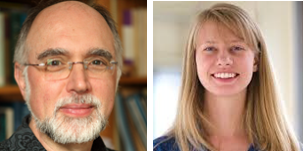
HBHL Theme 3
Total funding received: $375,171
HBHL funding received: $178,710
Award term: 3 years
Project team:
- Jean-Baptiste Poline (McGill)
- Bratislav Misic (McGill)
- Jorn Diedrichsen (Western)
- Joe Gati (Western)
- Estrid Jakobsen (McGill)
- Mor Regev (McGill)
- Molly Henry (Western)
- Virginia Penhune (Concordia)
- Emily Coffey (Concordia)
The Open Multimodal Music and Auditory Brain Archive wants to replicate the success of other open science projects that seek to characterize brain function in health and disease, now focusing on auditory cognition, a modality for which no similar databases currently exist. In order to do this, we will acquire functional, structural, and behavioural data from a large sample of healthy young participants while they are performing an extensive battery of auditory tasks ranging from low-level psychophysics to working memory, auditory-motor, music, and emotional engagement tests. The creation of an auditory-oriented database will have a transformative effect on the field of auditory cognitive neuroscience, first by allowing researchers to ask novel questions about the neural circuitry underlying auditory behaviour in the healthy brain and, importantly, to understand the sources of individual variability. Second, it will provide a means of investigating plasticity-related effects thanks to detailed information about experiential factors such as musicianship and bilingualism that are not documented in any existing databases. Third, the new database will serve as a model and provide baseline data for clinical studies on primary disorders of hearing, including studies on age-related hearing loss and tinnitus. Finally, given the critical dependence of the auditory domain on temporal processes, an important novel contribution is our inclusion of EEG measures for multiple tasks.
Multi-scale analysis of structure/function relationships in temporal-lobe epilepsy
Principal investigators: Neda Ladbon-Bernasconi (McGill), Ingrid Johnsrude (Western)

HBHL Theme 1
Total funding received: $99,800
HBHL funding recieved: $53,400
Award term: 1 year
Project team:
- Andrea Bernasconi (McGill)
- Ali Khan (Western)
- Terry Peters (Western)
- Jorge Burneo (Western)
- David Steven (Western)
In patients with drug-resistant epilepsy, surgery is an effective treatment only if the structural lesion associated with the seizure focus is identified and removed in its totality. Nevertheless, about 40% of patients will have seizure relapse. Regardless of seizure control, a similar proportion will exhibit cognitive impairments that were not evident or were milder, pre-operatively. Reasons for seizure recurrence and cognitive side effects remain largely unknown. The former may relate to inadequate neutralization of the lesional substrate, while the latter likely stems from surgical disruption of circuits still mediating function, a hypothesis not directly tested so far. This project aims to develop objective predictors of cognitive and seizure outcomes in patients with drug-resistant epilepsy by combining MRI-based markers of structure, resting-state fMRI, and cognition. One central aspect is to test the utility of movie-driven fMRI to identify and localize abnormal brain tissue, and to characterize functional networks in candidates for epilepsy surgery.
Translational model of Alzheimer pathology
Principal investigators: A. Claudio Cuello (McGill), Julio Martinez Trujillo (Western)
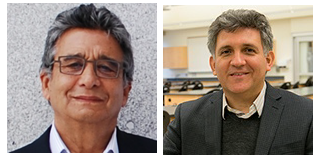
HBHL Theme 2
Total funding received: $297,800
HBHL funding received: $204,250
Award term: 3 years
Project team:
- Jim Gourdon (McGill)
- Vilceu Bordingnon (McGill)
- Sonia Do Carmo (McGill)
- Keith Murai (McGill)
Alzheimer's disease currently affects over half a million Canadians and this number is expected to grow over the next decade. Although dementia is regarded as one of the most significant health crises of the 21st century, researchers are still working to discover how the brain is affected during the disease. This project aims to develop an Alzheimer's disease model with the goal of creating a platform for researchers to study cognitive impairment that isn't currently available. If successful, this project could have a transformative effect on how Alzheimer's disease is understood and offer novel approaches to resolve fundamental aspects of Alzheimer's disease pathology.
Revealing the fundamental neuronal mechanisms underlying memory function in rodent and NHP CA1 area of the hippocampus
Principal investigators: Sylvain Williams (McGill), Julio Martinez Trujillo (Western)
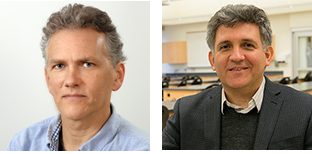
HBHL Theme 3
Total funding received: $741,000
HBHL funding received: $363,000
Award term: 3 years
Project team:
- Mark Brandon (McGill)
- Lisa Saksida (Western)
Recently, it has become clear that a radical change in perspective was needed to understand the role of hippocampal neurons in memory formation and that the activity of a very large population of neurons has to be taken into account to establish clear links between activity and behaviour. Recent theories propose that memory encoding, retrieval and consolidation may be inherent to coding by large populations of neurons (named neuronal assemblies). In this project, we will perform microendoscopic calcium imaging with a miniature microscope (the UCLA mini-scope), which is one of the most powerful methods recently developed in neuroscience. UCLA mini-scopes is a device that provides single-cell resolution of very large groups of neurons (more than a 1000 neuron at a time), that can be combined with electrophysiology during touchscreen-based memory tasks. Our first goal is to determine how neuronal assemblies code during encoding and recall in a standardized touchscreen task together with electrophysiology during wake and sleep. We will then focus on understanding the characteristics and dynamics of population neuronal coding in specific regions of the hippocampus.
Establishing neurophysiological evidence for the treatment of brain injury in intensive care units
Principal investigators: Stefanie Blain-Moraes (McGill), Adrian Owen (Western)

HBHL Theme 3
Total funding received: $360,000
HBHL funding received: $180,000
Award term: 3 years
Project team:
- Mohamed Badawy (MNI)
- Justin Letourneau (MNI)
- Marat Slessarev (Victoria Hospital)
- Teneille Gofton (University Hospital)
Advances in life-saving medical technology have dramatically increased survival rates amongst those in industrialized countries that sustain a moderate to severe brain injury. These individuals typically require extensive hospitalization in intensive care units (ICUs), where critical treatment decisions are made to maximize their likelihood of recovering consciousness and cognitive function. In the ICU, such treatment decisions are typically based on the unreliable behavioural responses of the patient, which are highly dependent on a multitude of clinical and environmental factors rather than on objective and quantifiable markers. This lack of evidence-based decision making is a result of both 1) a poor understanding of the mechanisms underlying the brain's ability to reconstitute consciousness and cognition after an injury and 2) the absence of a systematic, patient-accessible method of tracking cognitive recovery in ICU survivors. In this project, we aim to develop a point-of-care system that can accurately predict outcomes of unresponsive, brain-injured patients in the ICU. This system will combine 1) advanced techniques in EEG network analysis with 2) an online, patient-accessible battery of cognitive tests for long-term assessment of cognitive function in ICU survivors, to create a method of accurately predicting patient prognosis and long-term outcomes. In addition to providing critically-needed support for clinical decision-making, this study has the potential to transform our understanding of the brain mechanisms underlying consciousness and cognition by identifying the key networks and circuits associated with their recovery.
Identifying the neuronal activity of adult-born neurons in the dentate gyrus that support behavioural pattern separation
Principal investigators: Mark Brandon (McGill), Lisa Saksida (Western)
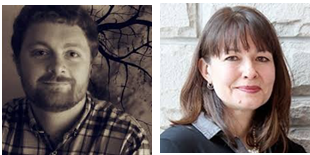
HBHL Theme 2
Total funding received: $679,500
HBHL funding received: $360,000
Award term: 3 years
Project team:
- Sylvain Williams (McGill)
- Timothy Bussey (Western)
- Cecilia Kramar (Western)
The overarching objective of this proposal is to understand how adult neurogenesis supports hippocampal processing at the network and behavioural levels. The study of pattern separation presents many challenges that we need to, creatively, overcome. Our knowledge about how information is represented in neural networks is limited and the small number of Adult-Born Neurons (ABNs) in the dentate gyrus (DG) region of the hippocampus – representing about 5-10% of the total cell population in the DG – makes it almost impossible to study them using electrophysiological methods. Although characteristics of ABNs are well studied and recorded in vitro, their relatively fast maturation rate and consequent changes in properties make it difficult to dissect them, in vivo, from other cell populations in the DG. We propose that to fully understand the neuronal mechanisms of hippocampal pattern separation supported by ABNs, we must understand how these cells contribute to the firing patterns of hippocampal 'place cells' using a novel in vivo recording approach.

